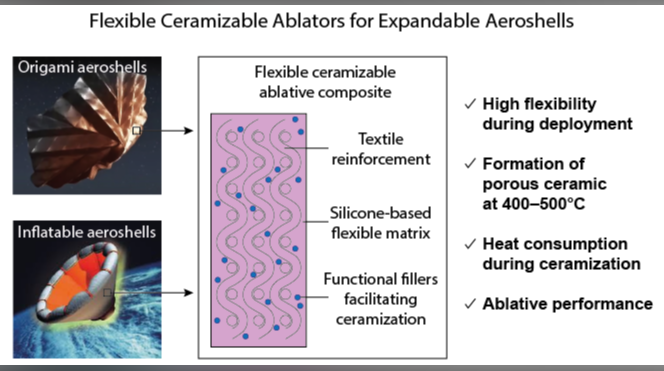Duration: 18 months
Spacecraft experience intense aerothermodynamic heating during atmospheric entry. The state-of-the-art thermal protection systems (TPS) for atmospheric entries are carbon–phenolic ablators. These materials are porous and rigid composites made of carbon fibers and a phenolic resin, and they dissipate heat by radiation reemission and ejection of pyrolysis gases.
Recently, expandable aeroshells based on inflatable or origami designs have gained attention due to the potential retrieval of rockets' upper stages or Mars-landing techniques. These designs offer a significant weight and volume reduction, a decrease in heat generation, and greater drag during entry into thin atmospheres. Because current ablators are stiff and cannot be used in the shape-changing elements of expandable aeroshells, new flexible and thermally resistant ablators must be developed. Therefore, we propose to build ablators based on flexible rubber-based ceramizable materials. Depending on the type of rubber used as a polymer matrix, these materials remain flexible within a broad range of temperatures. At 400–500°C, they irreversibly form a rigid and thermally stable ceramic coating. The process of ceramization consumes heat, contributing to an overall temperature reduction.
This project aims to develop new flexible and ceramizable ablators for expandable aeroshells. This will be achieved by engineering a composite that combines ceramizable silicone rubber and reinforcing fibers. The composite will remain flexible during the deployment of the aeroshell and will undergo ceramization during re-entry, serving as a rigid and porous TPS. Additionally, ceramizable composites are multicomponent materials whose properties can be tailored and optimized for ablative performance.

